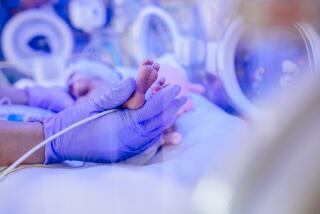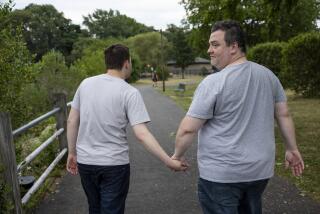Autism is shared among siblings, study finds

A second child is seven times more likely to be diagnosed with autism if an older sibling has the diagnosis, but environmental factors may be playing a significant role, according to a study of 1.5 million children born over a 24-year period.
The data lend support to a congenital element to some proportion of autism cases, but are unlikely to settle the debate over how genetics and environmental intersect in a disorder that strikes about 1 in 88 children, according to the Centers for Disease Control.
For one, the recurrence rate was slightly lower than rates found in previous studies. And rates for maternal half-siblings suggested that a mother’s contribution to recurrence was stronger than that of the father. That finding could be a signal that factors unique to the mother and her pregnancy may contribute to autism. Maternal antibodies transferred to a developing fetus, for example, have been implicated in some autism cases.
“There’s definitely genetics going on in the pathway to autism spectrum disorders, but what you also see is that something else is going on as well,” said Therese Koops Gronberg, a biostatistician at Aarhus University in Denmark. “Compared to what previously was believed, it supports a lower genetic role.”
The study, published online Monday in JAMA Pediatrics, differs from many previous looks at autism rates because it compares the recurrence rate to actual rates within the sample – in this case, all children born and registered in Denmark’s central medical database.
Because most countries lack such a broad registry, studies usually focus on samples of children with autism diagnoses, then compare to estimated rates of autism in the general population. But those background rates have fluctuated over the past decade, for reasons that may include increased parental and societal awareness and shifting definitions of the disorder. Even the Danish study cannot control for the possibility that parents with one child diagnosed with autism could be more likely than the average parent to see the symptoms in a second child.
Gronborg found the general rate of autism in the 24-year period was slightly above 1% - consistent with the lower end of the range often cited in clinical studies. For second children born to parents with one child diagnosed with autism, the rate hovered at 6.9% during that time period. That figure was lower than the rate reported in most clinical studies.
For second children from different fathers (maternal half-siblings), recurrence was about 2.4%, while the rate among paternal half-siblings, the recurrence rate hovered only slightly above the background rate – a statistically insignificant rise, Gronborg said.
The study did not include enough twins for adequate analysis, a problem endemic to most twin studies, which suggest a higher dual incidence of autism among identical twins than among fraternal twins.
Finding the genetic factors in autism has proved difficult, with one study implicating hundreds of genetic mutations, many of which arise spontaneously.
Autism spectrum disorder involves difficulties in social interaction along with repetitive behavior and narrowed interests.







